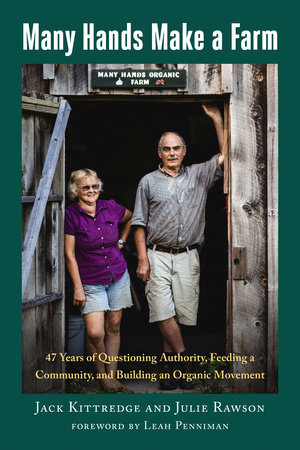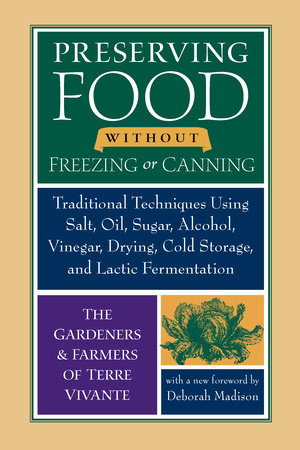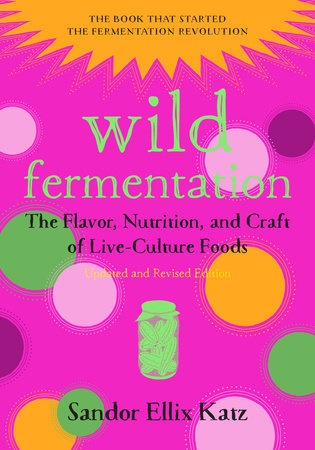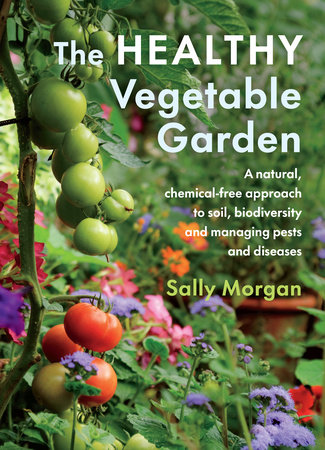Preserving Veggies: Tips for Freezing Vegetables
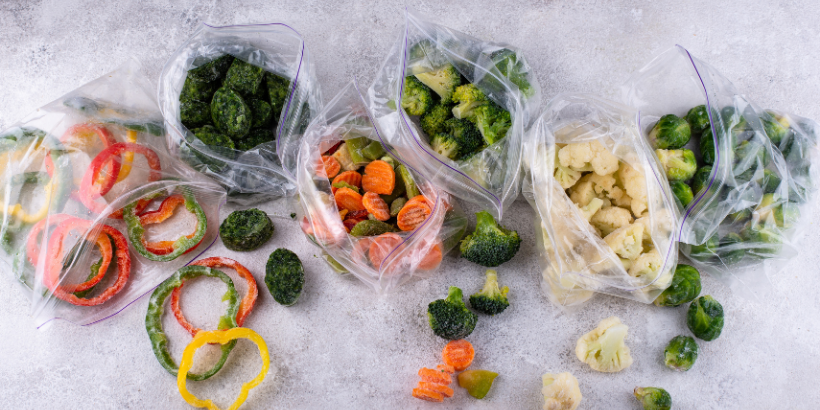
Try your hand at preserving veggies by freezing them! Freezing vegetables is a quick, simple way to preserve them to enjoy all year long.
The following is an excerpt from Many Hands Make a Farm by Jack Kittredge and Julie Rawson. It has been adapted for the web.
A Guide to Freezing Vegetables
Freezing vegetables, especially in small batches, is quite simple and quick. It takes only about ten minutes to freeze a bunch of kale or chard, and that will be the basis of a great winter meal. If you attempt no other method of food preservation, try this. Soon you will want to buy a chest freezer in which to store your bounty.
The Process of Blanching & Freezing Veggies

Here are the most important tips to remember for freezing vegetables:
- For best results, prepare your work area and tools well so you can work quickly and efficiently.
- Cut vegetables into bite-size pieces.
- Wait until the water is boiling to immerse the prepared vegetables.
- Start timing when the pot comes back to a boil. Most vegetables need to cook from one to three minutes in this part of the process. The important thing to watch for is a change to a brighter color.
- Dump the blanched vegetables into a colander in the sink and rinse immediately with cold water. This is easier than fussing with cooling the vegetables in an ice-water bath.
- Squeeze any extra water out of the vegetables when they arecool, and store them in freezer containers that will pack efficiently in your freezer.
This procedure works well for a wide range of vegetables. One variable is how long to leave the vegetables in the boiling water. You can do your own research, though I advise keeping your process simple so that you are more likely to accomplish it.
Tips for Freezing Vegetables
Here are some specific tips based on my experience.
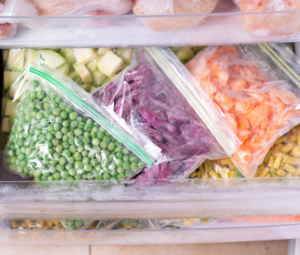
Broccoli, Brussels sprouts, cauliflower. Due to their chunky texture, these brassicas take around three minutes to properly blanch.
Celery. No blanching needed but will keep longer in the freezer if blanched.
Edamame or green soybeans. Boil the bean pods until you can pop the beans out of the shell. Cool them down in water so that you can handle them comfortably and then pop them out.
Garlic scapes. A month before harvesting stiff-neck garlic is the time to harvest scapes. Break off both the stem and the curly bulb head. We chop them and food process them with olive oil and freeze in pint containers for use in soups and stews.
Greens. Spinach, Asian greens, chard, kale, collards, and cabbage only take a minute or two. We usually strip the kale and collards from their stems before cutting them up, and we cut out and discard the core from cabbages.
Leeks. Blanch for thirty to forty-five seconds.
Parsley, peppers. No blanching needed These vegetables contain a lot of. water naturally. They freeze well unblanched and keep their quality for several months.
Starchy vegetables. For pea pods, remove and discard the stem ends before cutting. For sugar snaps, strip and discard the entire string. Blanch for two minutes. Shell peas and green beans need three minutes. Corn (cut off the cob) needs six to eight minutes.
Summer squash and zucchini. Slice and boil in a small amount of water for two minutes. Puree with the water and then freeze in plastic containers.
Winter squash. If, when stored on a shelf or in the root cellar, winter squash start to rot, salvage it by cutting out the bad spots, removing the rind, cutting it into small pieces, and then boiling it in minimal water. Process and pack as you would summer squash.
Recommended Reads
Recent Articles
Want to grow year-round, but a greenhouse feels like a big investment? When it comes to cost and flexibility, low tunnels are the all-around winners.
Read MoreWintergreen is the stunning evergreen groundcover that’s a game-changer for your garden! It’s cherished for its aromatic leaves, vibrant fall color & bright berries.
Read MoreGrow winter carrots for a sweeter & more flavorful harvest! Ditch the bland, store-bought carrots this winter! Grow your own winter carrots for a sweeter and more flavorful twist 🥕🥕
Read More

